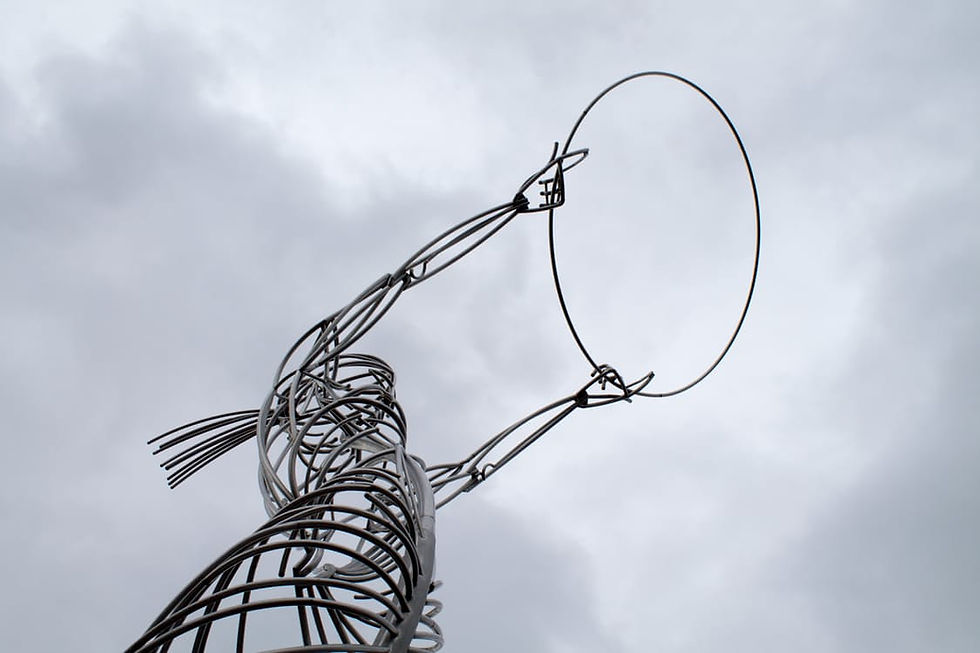Trauma as Architecture
- Meghan Zipin
- Jun 22, 2017
- 3 min read

Recently, I found myself in a beautiful conversation about the imprint of trauma on our body, mind and spirit. It isn't a for sure, for sure thing. Trauma is too creative for certainty, but it is a potential thing. And man-o-man, when trauma imprints manifest, they sure can do so with gusto!
Fists to the air.
Vulnerably, I admit that the conversation revolved around a personal experience, but I say that to highlight:
This is purely my opinion and analogy. I am always learning.
If you feel the same, remember you're not alone on an island.
If you witness someone who may feel the same, remind them that they're not alone on their island either and maybe even better- let them know, you know, they're out there.
Patience is SO critical. All parties. Self, through the endless web of support that hopefully surrounds us.
I know that is a completely-insanely-huge-mostly overwhelming-sometimes impossible ask. (To be patient)
Trauma is a #%*! (choose your own adventure). I encourage the use of expletives.

I've been thinking a lot about the intersection of trauma and architecture. Part of what makes trauma so isolating is that aesthetics matter. Part of what makes architecture so impressive is that aesthetics matter. People care if architecture is beautiful, or interesting, or unique, or even ugly. People care if a person is put together, in go-mode, laughing, crying, messy and in bed.

Ironically, the complexity of it all is usually lost- like the actual math, physics and engineering that allow a structure to stand, or a sculpture to hold the fluidity of form. It's the complexity of architecture that's amazing. How secret and sneaky, how strong and unrelenting, how clear and puzzling it all is at once. And a good architect, she keeps her secrets secret so no one can replicate the process.
The architecture of trauma is sneaky too, and the outside doesn't reflect the complexity of the inside. For some of us, scaffolding somehow maintains a pretty structure with movement and "togetherness" and for others the intensity of rebar leaves little room for breath. Over time and with effort, we can dismantle what went on and try to rebuild, but its like theres always a ghost structure that lives in the original foundation or frame. You can try real hard to demolish the frame or take down the rebar or alter the scaffolding, but then the wind blows or the earth shakes and the form holds on stronger. The frame remembers why it shifted that way and the rebar reminds you why it ran back and forth so unrelentingly. Scaffolding, although make shift maintains a scary strength. For good or bad trauma remembers how to survive. Its architecture is strong.

I struggle with the in-between. The space between frames and scaffolding and rebar, and aesthetics and complex math. I struggle with limitless quotas of expectation, of needs to endure- for anyone SO much bigger and deeper and far away from me. With way less than me.
I struggle with the in-between when things appear non-sensical, or a charge feels too big or exhaustive. I struggle when I look architecture in the eye and say ENOUGH. Enough with your sneaky smarts- just be unique, interesting or plain old ugly. :)

I'm a student. I'm always learning. I believe we all have a ghost frame within us. Trauma leaves an impactful frame. It builds magnificent skills. Beautiful skills that can build community. And I it also leaves rebar that gets gnarly over time. No conclusions, no fixes- just a reminder that if your rebar feels gnarly, sometimes mine does too.
